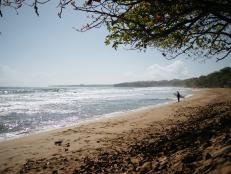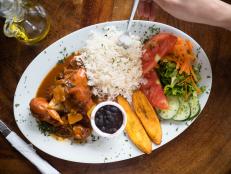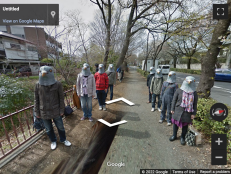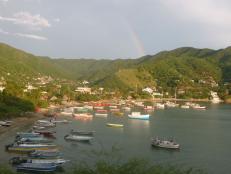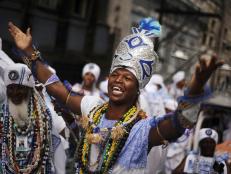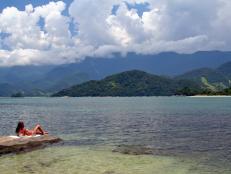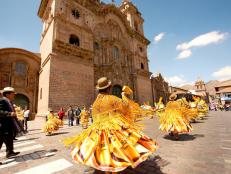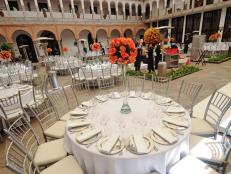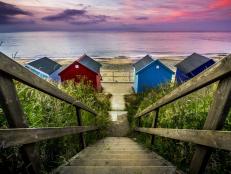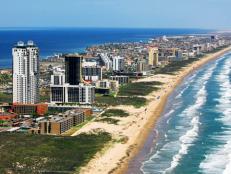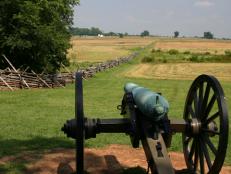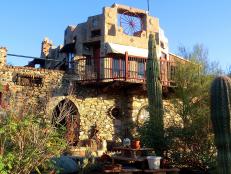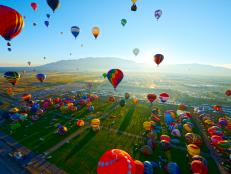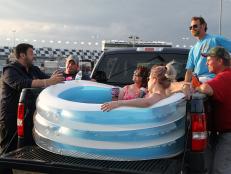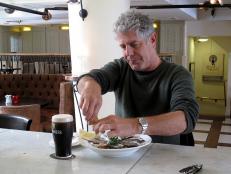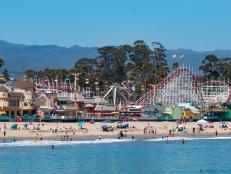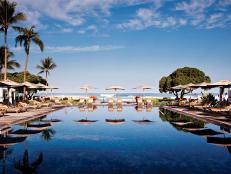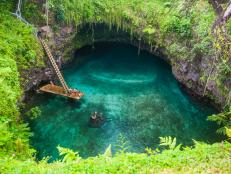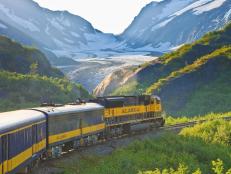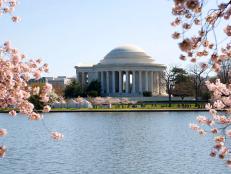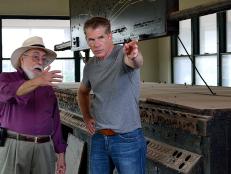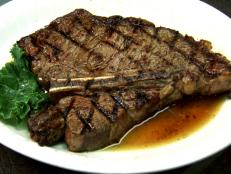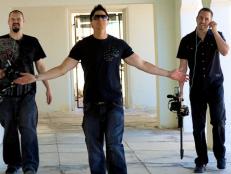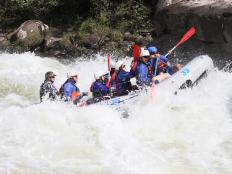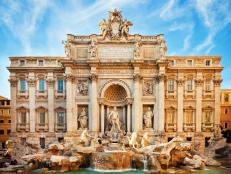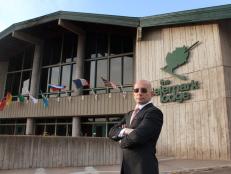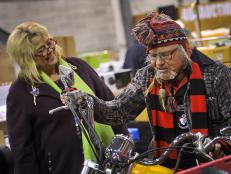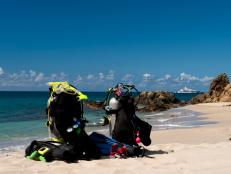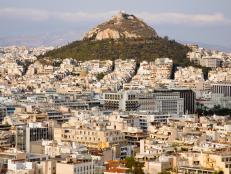Colombia: What to See and Do
Travel Channel's advice on what to see and do in Colombia.

By:
Valerie Conners
Of course, Colombia also earns fame for its lush, mountain-filled geography, and a number of attractions draw visitors into the country's far reaches, such as tours into the Amazon Jungle and treks to see ancient, pre-Incan tombs and statues. Colombia is far safer than it's ever been. Still there can be bursts of unrest, and the US State Department occasionally issues warnings to travelers; be sure to check their website before traveling.
Cities

Thinkstock
Explore Bogota, Colombia.
These days, Colombia's capital offers travelers a chance to see a sparkling, modern side of Bogota. The city is Colombia's economic capital, and shimmering skyscrapers tower over the town, trendy restaurants line the streets, nightlife options seem endless and high-end shopping abounds. Still, most visitors will want to spend their time exploring historic La Candelaria, a charming neighborhood with an artsy vibe, filled with cafes, museums and churches. In particular, stop by the Museo Botero, dedicated to the Colombian artist Fernando Botero.
After you've explored Bogota's urban center, take a pause and relax in one of the many parks tucked into Bogota's corners, such as Jardín Botánico José Celestino Mutis and the Parque Bolivar. While Bogota has improved by leaps and bounds, there is still a great economic disparity and crime continues to exist; always be aware of your surroundings, particularly after dark.
Cartagena
Easily Colombia's most romantic town and a World Heritage Site, Cartagena steals the hearts of visitors with its winding cobblestone streets and flower-draped wrought-iron balconies. Prepare to spend a good deal of time relaxing at outdoor cafes in Cartagena's Old Town, people-watching alongside the locals and facing the prospect of cute-town overload as horse-drawn carriages roll by. Be sure to visit Cartagena's cathedral and the 16th-century Iglesia de Santo Domingo. For a unique -- and typically Colombian -- experience, take a city tour in a chiva, or colorful wooden bus. Being a major tourist destination means Cartagena can be pricier than other Colombian cities. Still, the town offers a variety of budget-friendly accommodation and eating options.
Medellin
Once upon a time, Medellin ranked among the world’s most dangerous cities, as many drug cartels ran their operations from here. Oh, how times have changed. Today, Medellin houses one of Colombia's hottest nightlife scenes, with a slew of nightclubs, and salsa and tango bars. By day, enjoy the city's hilly and scenic setting; mountains surround Medellin, and the city also lays claim to a number of pretty parks, including El Parque de Los Deseos and El Jardín Botánico, a botanical garden. Take a stroll down Avenida Junín, a promenade filled with nice restaurants and shops. For excellent city views, hop aboard the city's cable car system, which climbs to some of Medellin's highest points.
What to See and Do

iStock
Go salsa dancing.
The town of Cali has been coined "the salsa capital of the world," largely because salsa music and dance permeate the everyday culture, and a specific style of salsa dancing was born here. Sizzling salsa clubs, like Chango and the Blues Brothers Bar, dot the city and suburban streets. But be sure to take an afternoon nap before your twinkle toes hit the streets; most clubs don't open or get into high gear until 2 a.m., and swing until 6 a.m.
Drink Coffee in the Zona Cafetera
Known for producing strong and tasty coffee, Colombia's Zona Cafetera is a kind of nirvana for coffee lovers. This high-altitude region's terraced plantations, temperate climate, snow-covered mountains and stunning valleys make it a lovely trip. Travelers can tour the plantations while basing themselves in one of the region's 3 main regions: Caldas, Quindío and Risaralda, also known as the "Coffee Triangle." Join an organized tour group or make your own way to one of the plantations, such as Finca Don Eduardo and Finca de San Alberto, for a tour and tastings.
San Agustin Statues
The verdant, mountainous area of San Agustin holds the mysteries of civilizations long past, filled as it is with ancient tombs, ritual altars and, most famously, enormous carved statues dating back to pre-Incan civilization. To see these incredible statues, many of which may be more than 1,500 years old, visit the region's 2 main archaeological sites, the UNESCO World Heritage Site Parque Arqueologico San Agustin and the Parque Arqueologico Alto De Los Idolos. The civilizations that carved the statues remain a mystery, but as novice explorers in the parks, you'll see the volcanic rock statues shaped as an array of wildlife like birds and snakes, human faces and warriors with frightening faces.
Tierradentro Tombs
In southwestern Colombia you'll encounter the Tierradentro region, another UNESCO World Heritage Site and home to 78 underground burial rooms, some measuring up to 26 feet deep. Incredibly steep spiral staircases lead down to the tombs, which can be visited on a 1-day hike from the village of San Andres de Pisimbala. The hike takes you through 5 archaeological sites and 2 museums. Once you descend into the caves you'll see ancient wall paintings in red, black and white patterns. Bring sturdy shoes: the steps leading down into the tombs are narrow and incredibly steep.

Ollie Harridge, Flickr
Salt Cathedral of Zipaquira
One of Colombia's most popular tourist attractions, the Salt Cathedral of Zipaquira haunts its visitors, because of its utterly unusual circumstances. About 30 miles from Bogota, this Roman Catholic church is located some 650 feet underground, built within the confines of a salt mine's tunnels. Visitors will see the cathedral's Stations of the Cross, and 3 naves representing the birth and baptism, life and death, and resurrection of Christ. Many of the ornamental details and carvings have been made directly into the salt mine walls -- there are even statues made entirely of salt.
Amazon Jungle Tour
Pay a visit to a portion of the world's largest rainforest with an Amazon Jungle tour. Leticia, the nearest city from which to reach the rainforest, is a popular jumping-off point into the jungle for many tour operators. Tours often bring visitors to Amacayacu National Park, or take them hiking along one of the many paths from Leticia into the jungle, such as one which leads to the Tanimboca reservation where tall platforms were built overlooking the jungle canopy. Boat trips down nearby rivers lead into more isolated reaches of the jungles where visitors can encounter remote Indian villages.
San Andres Island and the Seaflower Biosphere Reserve
Many tourists in Colombia take advantage of the country's prime Caribbean location to island-hop to San Andres, a coral island some 470 miles off the mainland, and part of an archipelago filled with cays, sand banks, coral reefs and atolls that was named a biosphere reserve (nicknamed "Seaflower") by UNESCO in 2000. San Andres offers postcard-perfect beaches, a generally unspoiled island paradise and excellent snorkeling and diving around the reserve's nearby reefs and coves.
What to Eat
Before leaving Colombia indulge in bandeja paisa, a typical plate that includes avocado, shredded beef, sausage, plantain, eggs, arepa, pork rinds and soup, rice and beans. If you've worked up a thirst, throw back some Aguilas, a popular Colombian beer.
Next Up
Costa Rica's Puerto Viejo Is a Great Off-the-Beaten-Path Pick
Less crowds and more fun on the Caribbean coast.
Off The Beaten Path: Where to Eat in Puerto Viejo, Costa Rica
Enjoy a taste of the Caribbean in this tiny beach town.
10 Of The Oddest Things Seen On Google Maps
It’s been 15 years since Google Maps launched its street view feature, and Google’s cars and satellites have captured their fair share of creepy photos and overhead images.
Santa Marta, Colombia: Top 5 Things to Do
Take an off-the-beaten-path trip to Santa Marta, Colombia.
Ecuador: What to See and Do
See Ecuador's popular cities and get our list of things to see and do.
Salvador's Top 5 Attractions
The best ways to explore Salvador, the birthplace of Brazil.
Fun Day Trips From Rio
Spend a day outside of Rio de Janeiro to explore the history, culture and beaches within a few hours away.
Uruguay: What to See and Do
Get Travel Channel's list of what to see and do in Uruguay.
5 Reasons Why Now is the Time to Visit Latin America
#4 might be the best reason yet.
Destination Wedding: JW Marriott Cusco
Cusco, Peru
